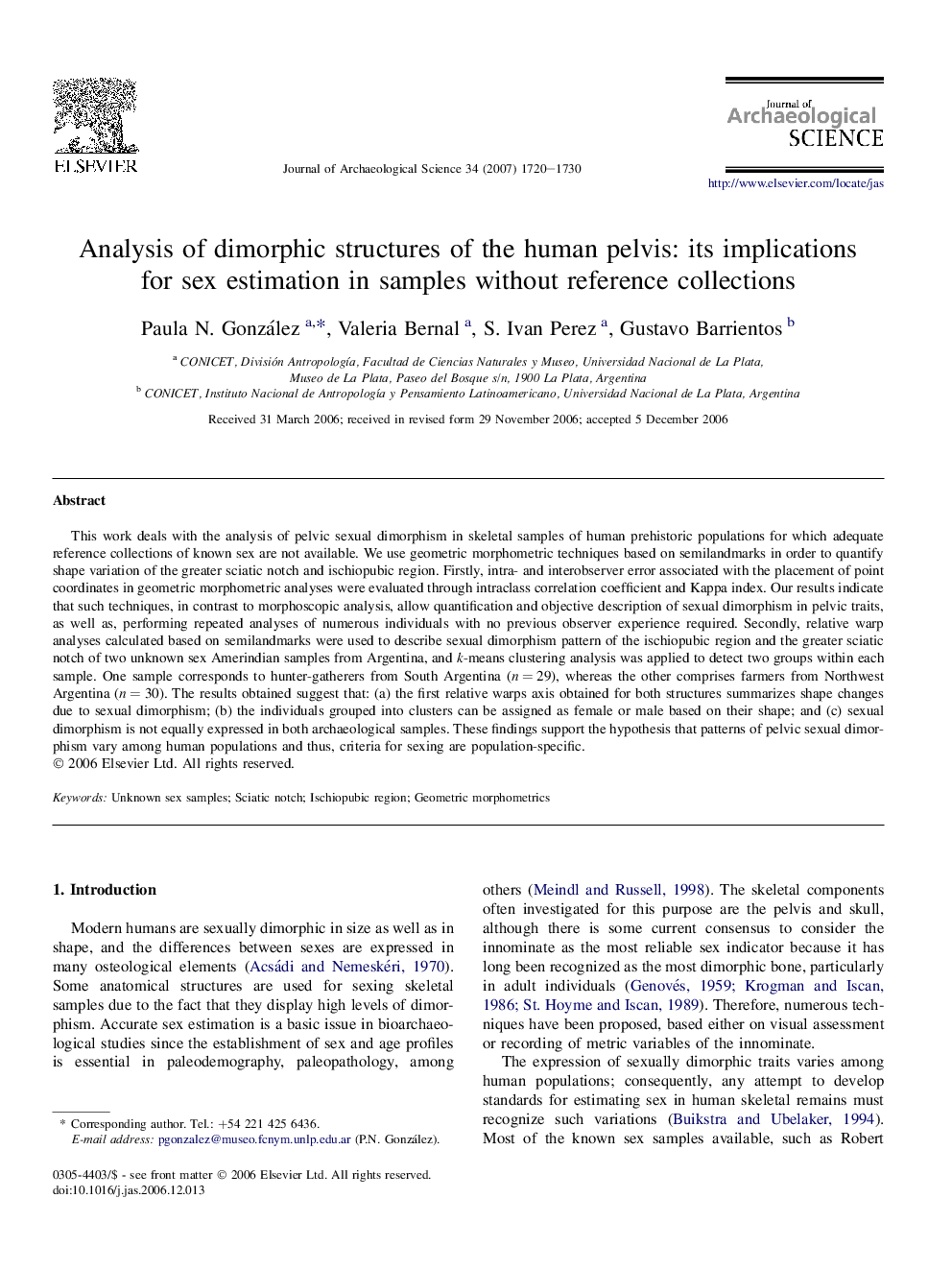| کد مقاله | کد نشریه | سال انتشار | مقاله انگلیسی | نسخه تمام متن |
|---|---|---|---|---|
| 1036371 | 943883 | 2007 | 11 صفحه PDF | دانلود رایگان |

This work deals with the analysis of pelvic sexual dimorphism in skeletal samples of human prehistoric populations for which adequate reference collections of known sex are not available. We use geometric morphometric techniques based on semilandmarks in order to quantify shape variation of the greater sciatic notch and ischiopubic region. Firstly, intra- and interobserver error associated with the placement of point coordinates in geometric morphometric analyses were evaluated through intraclass correlation coefficient and Kappa index. Our results indicate that such techniques, in contrast to morphoscopic analysis, allow quantification and objective description of sexual dimorphism in pelvic traits, as well as, performing repeated analyses of numerous individuals with no previous observer experience required. Secondly, relative warp analyses calculated based on semilandmarks were used to describe sexual dimorphism pattern of the ischiopubic region and the greater sciatic notch of two unknown sex Amerindian samples from Argentina, and k-means clustering analysis was applied to detect two groups within each sample. One sample corresponds to hunter-gatherers from South Argentina (n = 29), whereas the other comprises farmers from Northwest Argentina (n = 30). The results obtained suggest that: (a) the first relative warps axis obtained for both structures summarizes shape changes due to sexual dimorphism; (b) the individuals grouped into clusters can be assigned as female or male based on their shape; and (c) sexual dimorphism is not equally expressed in both archaeological samples. These findings support the hypothesis that patterns of pelvic sexual dimorphism vary among human populations and thus, criteria for sexing are population-specific.
Journal: Journal of Archaeological Science - Volume 34, Issue 10, October 2007, Pages 1720–1730